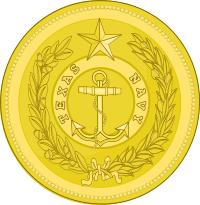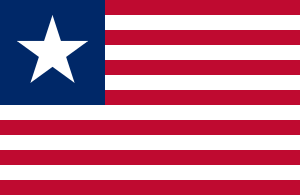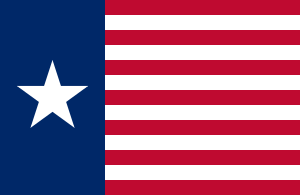Texas Navy facts for kids
Quick facts for kids Texas NavyNavy of the Republic of Texas Second Texas Navy |
|
|---|---|

Texas Navy Seal
|
|
| Active | 23 March 1839 – 19 February 1846 |
| Country | |
| Allegiance | Constitution of the Republic of Texas |
| Type | Navy |
| Role | Naval warfare, logistics |
| Size | 4 schooners, 3 brigs, 1 steamship, 1 sloop-of-war |
| Part of | Texas Military Department
|
| Colors | Red, white, and blue |
| Vessels |
|
| Engagements | Yucatan campaign |
| Commanders | |
| Notable commanders |
|
The Texas Navy was the official navy of the Republic of Texas. It was also known as the Second Texas Navy. This navy helped Texas fight for its freedom from Mexico. It was created in 1839 and joined the United States Navy in 1846. This happened when Texas became the 28th state of the United States.
Contents
The Texas Navy grew from an earlier group called the Texian Navy. This first navy was formed in November 1835. Its job was to help Texas win independence from Mexico. It had four ships: Liberty, Independence, Invincible, and Brutus.
- Liberty was sold in June 1836.
- Independence was captured by Mexico in April 1837.
- Invincible and Brutus got stuck in shallow water in August 1837.
After these losses, Texas needed a new navy.
In October 1836, the Texas government decided to spend money to build four more ships. President Sam Houston approved this plan. However, nothing happened right away.
After the first navy's ships were lost, a new plan was made in November 1837. This plan was for six new ships. A man named Samuel M. Williams was put in charge of building them. He hired Frederick Dawson to build the ships.
In November 1838, Williams also bought a steamship called Charleston. It was renamed Zavala to honor Lorenzo de Zavala. This ship was ready on March 23, 1839. This date is seen as the official start of the Texas Navy.
The Texas Navy was led by Edwin Ward Moore. He was a skilled officer from the United States Navy. For three years, the Texas Navy sailed along the Mexican coast. They kept the Mexican fleet busy defending its own shores.
The Battle of Campeche
One important fight was the Naval Battle of Campeche on May 16, 1843. In this battle, two Texas Navy ships, the Austin and the Wharton, fought Mexican ships. They were helped by ships from the Mexican state of Yucatan, which was rebelling at the time.
This battle was special because a sailing warship fought against steam-powered warships. It was a long fight over several days. Neither side completely won, but it was a big victory for Texas. The Texas Navy forced Mexico to stop blocking the port of Campeche. This helped the rebels in Yucatan.
Other ships in the Texas Navy at this time included:
- The brigs Potomac and Archer.
- The schooners San Jacinto, San Antonio, and San Bernard.
- The Zavala, which was the first steamship used in battle in North America.
When Texas joined the United States in 1846, the Texas Navy became part of the United States Navy.
Texas Marines
The Texas Marines were the special soldiers who served with the Texas Navy. They were like the United States Marine Corps. Their jobs included:
- Keeping order on ships.
- Guarding naval bases on land.
- Being sharpshooters during battles.
- Helping with naval boarding (when soldiers jump onto an enemy ship).
The Texas Marines were officially started on January 14, 1836.
Land for Veterans
After the Texas Revolution, the government promised land to soldiers who had served. This was a common way to reward military service. However, there was a big disagreement about whether Texas Navy veterans should get land.
Why Land Grants Mattered
Land grants were important for encouraging people to join the army. Texas gave millions of acres of land to army veterans. But not a single acre was given for naval service.
Historians say the Texas Navy was very important for winning independence. About three-quarters of all troops, supplies, and money came to Texas by ship from New Orleans. Ships were the easiest way to get things into Texas because of the difficult land routes. The Navy protected these shipping lanes. Without the Navy, the young Republic of Texas might not have survived.
Mexican General Vicente Filisola even said that land operations in Texas couldn't succeed without a navy helping.
The Land Grant Fight
Despite the Navy's importance, politics caused problems for rewarding its veterans. President Sam Houston, who was president at different times, did not want to give land grants to navy veterans in 1842.
Houston and another leader, Mirabeau Lamar, had different ideas about the navy. Lamar wanted the navy to be aggressive and attack Mexican coasts. Houston wanted the navy to stay close to shore and protect ports for trade.
These disagreements led to changing policies. In 1841, a senator named Robert Potter tried to pass a law to give land to navy veterans. President Houston vetoed this bill in January 1842.
Houston said that while navy men were brave, giving them land was "unnecessary extravagance." He believed sailors didn't usually stay in one place and wouldn't improve the land. He also thought that others, like people they owed money to, would benefit more than the sailors themselves.
Houston also argued that sailors already got paid and received "prize money" for capturing enemy ships. He also claimed that most sailors from the revolution were either dead or had moved away.
Robert Potter tried again to pass the law, but he was not successful. The issue was never brought up again, and Texas Navy veterans did not receive land grants.
Over the years, Texas has had other groups related to its naval history.
After World War II, Texas created the First Naval Battalion in 1948. This group was part of the Texas State Guard. Its goal was to have trained patrols for the coast and rivers. They had one ship, the Sumoria.
In 1958, Governor Price Daniel brought back the Texas Navy. This was during a disagreement with the United States about who owned certain coastal lands. This group is often called the Third Texas Navy. It was mostly a social and ceremonial club. It helped remember the history of the earlier Texas Navies.
The Third Texas Navy continued as a social club. In 1972, it became the Texas Navy Association. This is a non-profit group that still operates today. It works to preserve the history of the Texas Navy.
Maritime Regiment
In 2006, Governor Rick Perry created the Maritime Regiment. This group was part of the Texas State Guard. Its job was to help with homeland defense, search and rescue, and disaster operations. They worked with groups like the United States Coast Guard. This group used small boats for river and coastal support. It was later replaced by other units in 2020.








